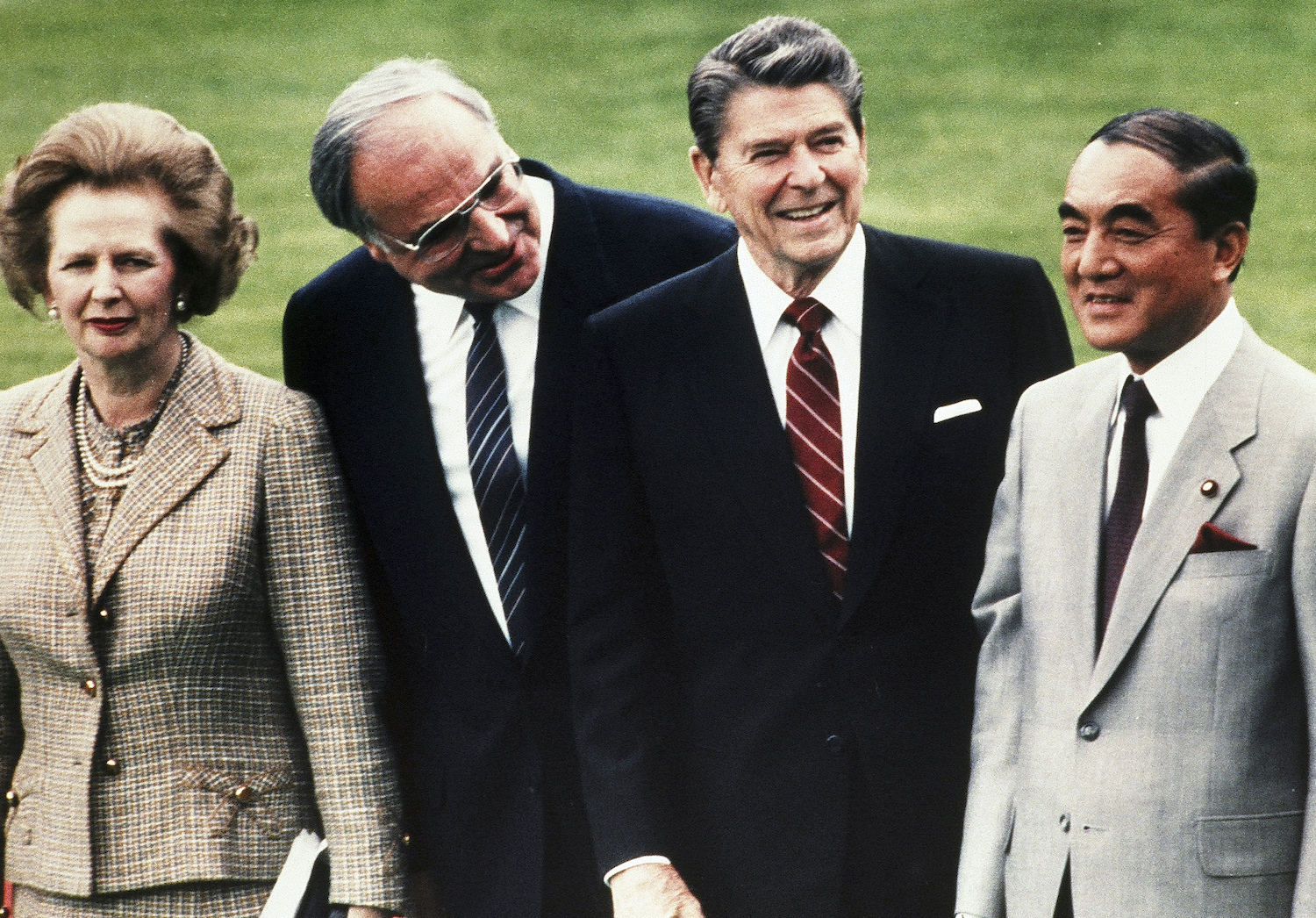
TOKYO: Yasuhiro Nakasone, a former Japanese prime minister whose Cold War-era tenure was best characterised by his close bond with US President Ronald Reagan and pursuit of a robust bilateral alliance, died on Friday, the ruling Liberal Democratic Party said. He was 101.
Nakasone, in office between 1982 and 1987, witnessed Japan’s rise as an economic power and trade friction with the United States while enjoying the “Ron-Yasu” friendship. Siding with British Prime Minister Margaret Thatcher, he aimed to raise the country’s presence as a member of the West that confronted the former Soviet Union.
At home, Nakasone sought to “finalise the settlement of postwar politics”, pushing for administrative and fiscal reform in support of a smaller government. He led efforts to privatise key state-owned enterprises, including Japan National Railways.
Prime Minister Shinzo Abe described Nakasone as someone who navigated the nation at a critical juncture in postwar Japan. “I cannot help but feel deeply sad,” he said in a statement.
In the 1,806 days in office — the fifth-longest in postwar Japan — and beyond, Nakasone, who died at 7.22am local time at a Tokyo hospital, was an ardent supporter of amending the postwar Constitution, a goal shared by Abe.
Nakasone aspired to beef up the country’s defences by eliminating its cap on defence spending, which had been kept within 1% of gross national product.
Shortly after becoming prime minister, Nakasone made the first official visit as Japanese premier to South Korea in January 1983, helping improve ties between Seoul and its former colonial ruler.
In 1985, the conservative lawmaker made history by visiting Yasukuni shrine for the first time as Japanese prime minister on the Aug 15 anniversary of Japan’s surrender in World War II, outraging China.
The Shinto shrine in Tokyo is still a source of diplomatic friction decades later with China and South Korea, which suffered from Japanese wartime aggression, as they view it as a symbol of Japan’s past militarism.
Nakasone, a political hawk, also caused a stir with his remarks that Japan should be like an “unsinkable aircraft carrier” for the United States in defending against Soviet Backfire bombers and controlling strategic straits to block the passage of Soviet ships.
He also suggested at an LDP seminar in 1986 that blacks and Hispanics were responsible for lowering the average intelligence level in the United States.
On the economic front, the Nakasone administration allowed the Japanese yen to appreciate against the US dollar under the 1985 Plaza Accord.
The pact was reached among Britain, France, then-West Germany, Japan and the United States to weaken the dollar relative to other major currencies through coordinated intervention.
But the yen’s sharp rise plagued the export-reliant Japanese economy, prompting monetary easing by the Bank of Japan that led to an asset-inflated bubble in the economy in the latter half of the 1980s before its burst in the early 1990s.
Born in Takasaki, Gunma Prefecture, on May 27, 1918, Nakasone graduated from Tokyo Imperial University, the precursor of the University of Tokyo, and worked for the home affairs ministry and later the Imperial Japanese Navy.
He joined the LDP in 1955, when it was created through a merger between the Liberal Party and the Democratic Party. He won his first Cabinet post as director general of the former Science and Technology Agency in 1959.
After serving as minister of transport, head of the then Defence Agency, minister of international trade and industry, and LDP secretary general, he succeeded Zenko Suzuki as the 71st prime minister.
First elected to the House of Representatives in 1947, he served 20 terms in the chamber, mostly as a member of the long-governing LDP until he retired from politics in 2003.
His retirement came in response to a request from then Prime Minister Junichiro Koizumi, who said any LDP lawmaker aged 73 or older should not be endorsed as a party candidate in elections. Nakasone was in his 80s at the time.
Even after his retirement, Nakasone continued to work on his lifelong mission of seeking changes to the US-drafted Constitution.
Nakasone was awarded the Grand Cordon of the Supreme Order of the Chrysanthemum, one of the nation's highest decorations, in 1997.